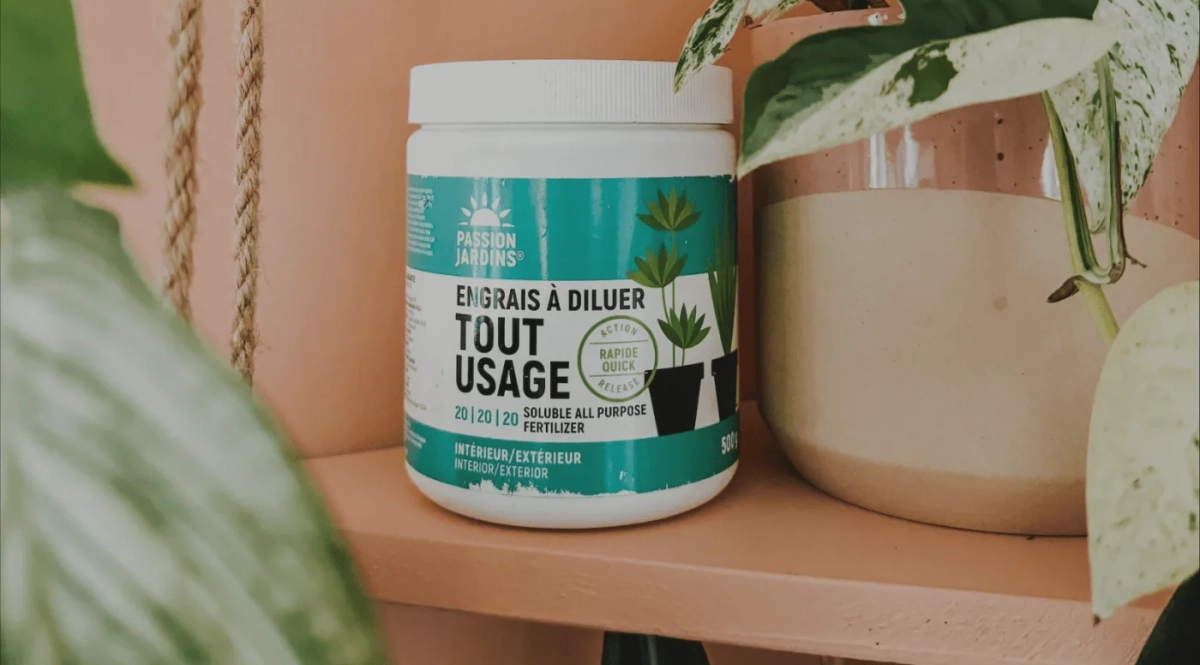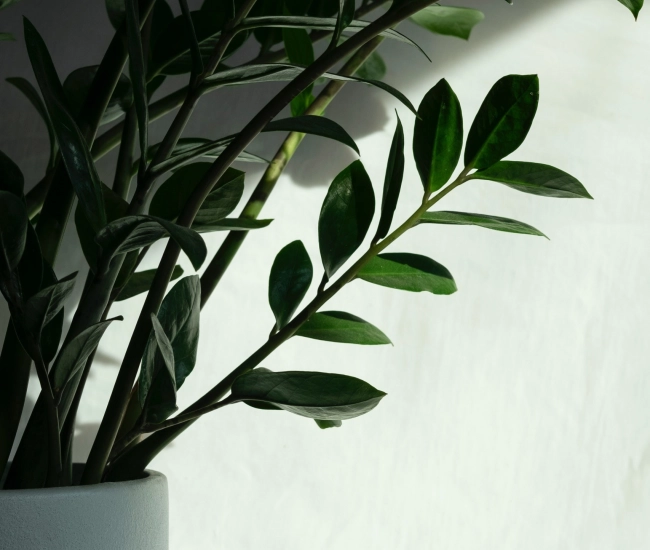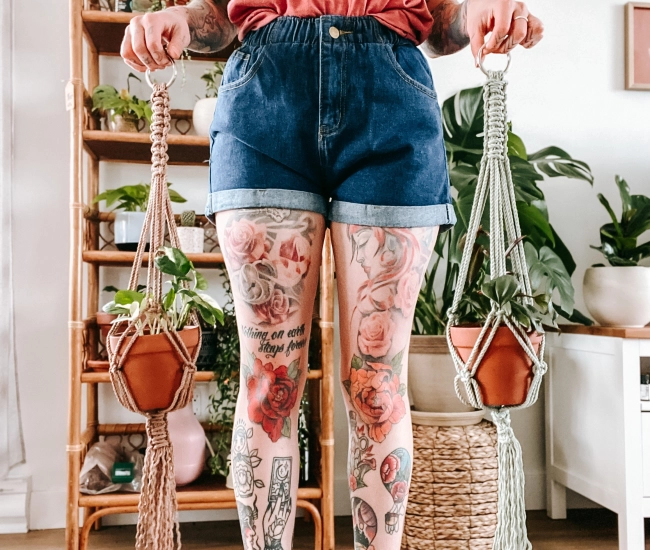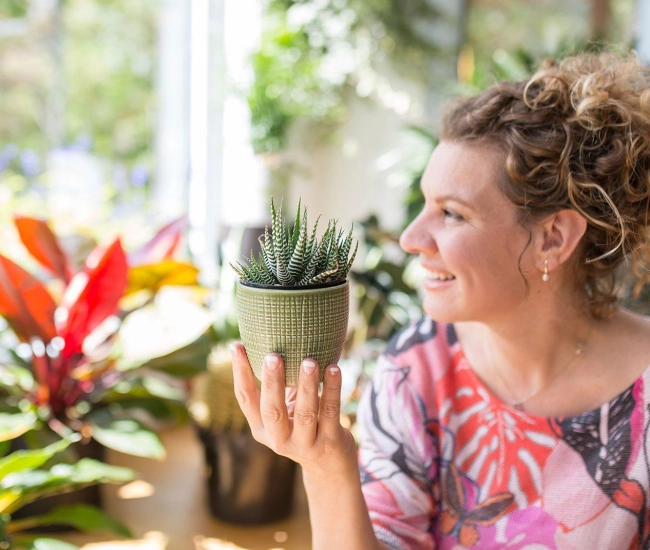

Text and photo: Laura Pigeon
__
Our indoor plants need proper watering, good ambient humidity, good natural or artificial lighting, but also…fertilizer! Today, we are going to try to demystify all that in a simple way. What fertilizer to use? Which fertilizer is the best? When to apply fertilizer? Can I put it on all my plants? In winter too?

Why give fertilizer to our indoor plants?
Indoor plants, unlike outdoor plants, are grown in pots. The plants will feed on the nutrients found in our potting soil. However, some ingredients found in potting soil for indoor plants (e.g., perlite, sphagnum peat) do not really contain nutrients. That is why fertilizer comes to the rescue. Nutrients are necessary for the development of our green girls and their ability to produce chlorophyll. Yes, a plant can still live without fertilizer. But it will be much healthier if you give it some!
Types of fertilizers
There are countless types of fertilizers for our plants. Liquid, powder, granule, or stick fertilizer…which one to choose?
- Liquid and powder fertilizer: These are undoubtedly the most popular in my opinion. They are easy to use since they dissolve in the watering water. However, it is important to remember to add it to our water before watering.
- Granule fertilizer: This is slow-release fertilizer. Just put a few granules in the potting soil, and it will slowly dissolve its nutrients. I find it convenient for people who tend to forget to add fertilizer during watering.
- Stick fertilizer: This is also a slow-release fertilizer. Its stick format is practical, durable, and generally economical.
Mineral fertilizer or natural fertilizer? Which is better for my plants?
There is not really a product that is better than the other in my opinion. Having used several types of fertilizers over many years, I have not noticed any striking differences. I believe it is really a personal preference and also about your environmental values.
Some will prefer seaweed fertilizer or fish hydrolysate because they are natural products. Others do not like the smell and will use 20-20-20. And that's perfectly fine! If you are someone who often forgets to give fertilizer, opt for granules! The plant itself will not really notice the difference between the two.

What is N-P-K?
We often see the numbers 20-20-20 on fertilizers for indoor plants. This is the N-P-K: it corresponds to the three essential nutrients found in fertilizers.
- N for Nitrogen: helps in the growth of green and vigorous leaves
- P for Phosphorus: Promotes root growth
- K for Potassium: Strengthens the plant's resistance to diseases and pests, but also promotes flowering and stem rigidity
When to fertilize our plants?
We have often heard: You must stop fertilizing from October to March! This is false. You can fertilize your plants all year round on one condition… that they are growing! If your plant is dormant, leave it alone and wait before giving it fertilizer.

In general, I fertilize about every other watering when they are growing. (As for liquid fertilizer, that’s what I use) It should also be noted that some plants need fertilizer more than others! Fast-growing plants and flowering ones will need fertilizer more often. So yes, it is possible to have plants that are growing all year round thanks to grow lights now!
Be careful… over-fertilizing can be fatal!
Over-fertilizing our plants can lead to root damage, which is why it is important to always read the instructions on the packaging before use. You should never give fertilizer to a suffering plant hoping that the fertilizer will save it. Quite the opposite might happen. Fertilizer is not a remedy. It's a bit like vitamins for us humans. It supports, but it does not cure. Before starting to give it again, make sure to maintain it well. (Too much water? Not enough water? Too much light? Not enough? etc.)

“I put banana peels in water and water them with that… is it good? There’s potassium, right?”
I have seen many things. Coffee, tea, spices, banana peels, etc. I have only one answer to give: Yes, there might be some nutrients given to your plant, but the fertilizers designed for this have the right percentage of potassium, nitrogen, and phosphorus. Whereas those ingredients do not.
So in my opinion: avoid banana peels if you don’t want to end up with a soil fly infestation and bad odors.
I hope I have answered all your questions about fertilizer! Happy fertilizing, your green girls will thank me!
Tips and advice



